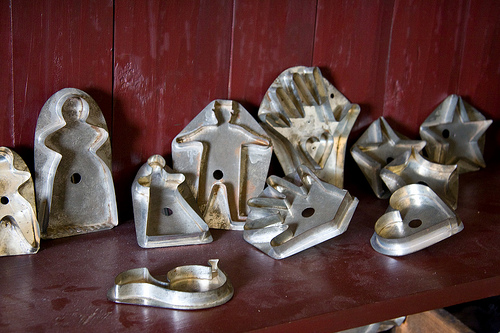
Image Credit: Cybjorg/PhotopinCC
I’m a people-watcher.
As part of my creative process, I study folks at the coffee shop, the grocery store, and the mall. Really, wherever I go my radar’s on high alert. I never know what I might see (or hear).
- I once saw a man blowing bubbles at a stop light. Not from bubble gum, but from a little red bottle with a matching wand. Since there was no kiddo present (he was alone), my imagination ran wild. I wondered if blowing bubbles was a stress-reducer. Or…maybe the fellow was a scientist testing a revolutionary product.
- In a parking lot I saw a woman change her blouse. In broad daylight. Maybe she was going to a job interview. Or… maybe she had a secret identity. The possibilities were endless.
- Then there was the time at the mall an older gentleman asked the store clerk to help him select undergarments for his wife. No, he didn’t know what size she needed or what color she might like. “But she’s very patriotic.” Huh?
For novelists, people-watching is second nature. It’s necessary to add realism to our stories, but it’s also thrilling when we create a plot thread from folks’ interactions or file away snippets of conversation our fictional characters might use.
I often leave the house with a small notebook or index cards. (I find index cards are sometimes more helpful because I can organize my thoughts a little easier later.) I especially like the colored spiral bound index cards because I can organize characters according to color and the cards are easy to flip through. Index cards on a ring also work well.
Because I don’t like to read about boring, cookie-cutter characters, I certainly don’t want to write about them either.
For me, the fun part of the creative process is breathing life into my characters.
Creating complex characters with diverse personalities, traits, and quirks adds dimension to my stories. Studying real people makes the process easier and it seems less like research and more like fun!
My fictional worlds spring to life from observing the real world around me.
While I think it’s completely normal to carry notepads, index cards, and ultra fine-tipped Sharpies, your creative process might be different. Maybe you brainstorm your story lines and develop your characters in another way.
I don’t think there’s necessarily a right or wrong method. If your way achieves your goal, then what you’re doing works for you.
At the same time, I think we should be open to trying new and improved methods because getting too comfortable with one way of doing things doesn’t allow room for growth.
And besides sharing our stories with the world, isn’t that the point to writing?
***
What’s your creative process like?
What methods work best for you?
PLEASE SHARE
Doing this can add realism to our stories: (Click to Tweet)
As a writer, these are things I rarely leave home without: (Click to Tweet)
Have a great day!
Blessings Always,


Comments 8
I love to people watch. My favorite place/time was when I worked at Cedar Point. So many stories.
Author
Tina, I look forward to reading!
“But she’s very patriotic.” Hilarious!! Please, please put that in a book one day. 🙂
My creative process is somewhat of a mess (sorta like my home at the moment–I’m on deadline–what can I say?). I don’t have any one method. I’m really bad at remembering to write things down when ideas hit or I witness funny things. But one thing that has really helped me, surprisingly, is Twitter. When I see something funny, I tend to tweet it–and doing so embeds it in my mind. 🙂 One of the other things that really helps me creatively is watching movies or TV shows with really great dialogue…that always gets my creative juices flowing.
Author
Melissa, you know I love your movie idea! =) And good tip about Twitter. It’s really a great developmental tool to spark our creative ideas.
About the gentleman shopper… I wish you could have been there. LOL
I worked at the World’s Fair in Vancouver in 1986, we had walls and WALLS devoted to stupid questions.
I’ve worked various retail jobs and have learned to smile like a pro. And keep my cool when assault with a debit machine was warranted. Like when men came in 2 days before Christmas and asked if we had the red sweater his wife saw there in June, or clothes from a store around the corner in the mall.
I find that I have to think of the worst scenario possible, then I can go from there to dredge up the emotional impact of my more difficult scenes.
Author
Jennifer, grace under pressure! It’s an art isn’t it?
And I’m with you— I often pair my “what ifs” with “how can I make things worse before they get better?” I love those “dark moments” because they often precede an unforgettable come-to-Jesus meeting.
I take Melissa’a movie idea a step further – frequently I’ll watch the commentaries included on a DVD.
Hearing someone who was involved in the creative process – be they actor, director, or writer – can offer some really unique insights into plotting, pacing, and characterization.
Movies – and novels – are an exaggeration of reality, but knowing how far one car go without introducing satire or parody is hard. Good movies provide these lessons in a compact package, and for me they’re invaluable.
And fun.
Author
Great idea, Andrew! I don’t always listen to the commentaries— I should.